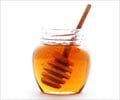A research team led by University of Michigan evolutionary biologist Jianzhi George Zhang, has uncovered evolutionary facts about a gene called csd, which is a sex determiner in honey bees
A research team led by University of Michigan evolutionary biologist Jianzhi "George" Zhang, has uncovered evolutionary facts about a gene called csd, which is a sex determiner in honey bees. These novel inputs can indeed be ploughed back into formulation of improved methods to breed honeybees, who are effective pollinators of crops that are valuable to the economy. The findings of Zhang and collaborators are published in a special issue of Genome Research exclusively dedicated to the biology of the honey bee. The issue will be available online and in print Oct. 26.
Scientists have long known that in bees—as well as wasps, ants, ticks, mites and some 20 percent of all animals—unfertilized eggs develop into males, while females typically result from fertilized eggs. But that's not the whole story, and the discovery in 2003 of csd (the complementary sex determination gene) helped fill in the blanks. The gene has many versions, or alleles. Males inherit a single copy of the gene; bees that inherit two copies, each a different version, become female. Bees that have the misfortune of inheriting two identical copies of csd develop into sterile males but are quickly eaten at the larval stage by female worker bees.The system works fine in nature, where it prevents the colony from wasting precious energy and resources on abnormal males incapable of carrying out the all-important role of mating. But in bees raised for honey or for pollinating crops, the sex-determination system can cause problems. Beekeepers inbreed bees to select desirable traits, but inbreeding raises the odds of producing fertilized eggs with two copies of the same csd allele. If too many sterile males result, the colony may die out.
"If we know more details about how many alleles there are and what their frequencies are, bee breeders can design better strategies to avoid producing sterile males," Zhang said. "Our work aids in this effort by providing a direct tool to examine alleles from different populations."
In the research, Zhang and coworkers from U-M, Michigan State University and the University of Kansas sequenced csd genes from individuals in three closely related species of honey bee: the familiar backyard denizen Apis mellifera and the Asian honey bees Apis dorsata and Apis cerana. The group also sequenced six so-called neutral regions of the genome which, unlike genes, do not carry codes telling cells how to make proteins. Then, the researchers constructed gene genealogies—family trees for both the csd gene and the neutral regions.
Their results showed that csd is about seven times more variable than neutral regions of the honey bee genome. In addition, many csd variants are shared among the three species, evidence that the many different alleles have been preserved in these lineages for a very long time.
Such a pattern supports the idea that an evolutionary mechanism known as balancing selection has been at work. Evolution works through the process of natural selection, in which genetic mutations that offer some advantage are favored, and those that have harmful effects are weeded out. Typically, this results in one version of a gene becoming very common and other versions becoming rare or disappearing altogether. When balancing selection operates, however, natural selection favors a diverse mix of alleles, as seen with csd in honey bees.
The research also showed just how long the csd alleles have been around.
"We estimated the age of the alleles at about 14 million years," said Zhang. "We don't know for sure when the species formed, but it's thought to be about six to eight million years ago, so the alleles are even older than the species."
Zhang collaborated on the research with postdoctoral fellow Soochin Cho and undergraduate student Daniel Green of the University of Michigan, Zachary Huang of Michigan State University and Deborah Smith of the University of Kansas. The researchers received financial support from the U-M Office of the Vice President for Research, the National Institutes of Health and the University of Kansas General Research Fund.
Source-Eurekalert
SAV









